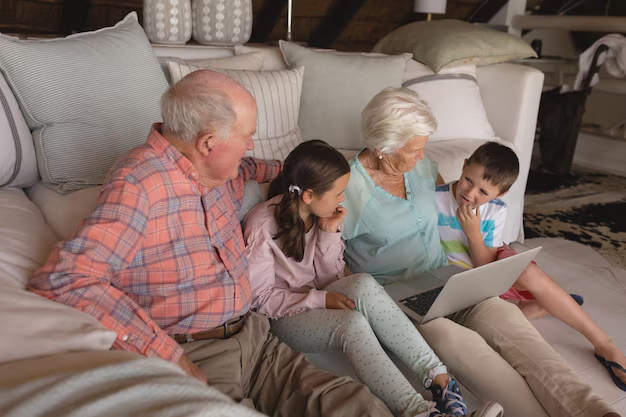Discover the Hidden Treasures of Multi-Generational Living for Seniors
In recent years, multi-generational housing has emerged as a popular living arrangement for many families, offering a treasure trove of benefits, especially for seniors. This living setup involves multiple generations of a family living under the same roof, be it grandparents, parents, and children. While some may view it as a return to traditional values, the advantages for seniors in such environments are deeply comforting and practical.
Enhanced Emotional Well-being
Living with family provides emotional support. Seniors who share their home with younger family members often experience a reduction in feelings of loneliness and isolation, which are common among the elderly. The presence of loved ones offers daily interactions and the opportunity to engage with younger generations, fostering a sense of purpose and a renewed zest for life.
Improved Physical Health
Having multiple generations in one home can encourage a more active lifestyle for seniors. Simple activities like playing with grandchildren or helping out with minor household tasks can keep seniors physically engaged. Moreover, family members can provide timely assistance with medications and appointments, ensuring better health management.
Financial Savings and Stability
Multi-generational living can significantly reduce living costs, as expenses such as rent, utilities, and groceries are shared among family members. This economic benefit can be particularly impactful for seniors living on a fixed income. Such an arrangement also allows for better allocation of financial resources, making it a sound option as retirement funds might stretch further.
Shared Responsibilities
Household responsibilities can be divided among family members, which can lessen the burden on seniors, enabling them to enjoy more leisure time. Chores and maintenance are often split, allowing seniors to contribute in ways that suit their abilities while not overexerting themselves.
Enhanced Safety and Security
Living with family members can enhance a senior's safety, providing 24/7 support in case of emergencies or health issues. Having a support system readily available can ease concerns about falls or other accidents that are common among seniors living alone.
Opportunities for Learning and Growth
Interacting with younger family members opens doors to a wealth of learning opportunities for seniors. Whether grasping the basics of new technology or engaging in fresh perspectives, living with youthful family members can be invigorating. This dynamic fosters an enriching environment for both seniors and young members alike.
Exploring Financial and Educational Resources
Choosing a multi-generational setup is just one piece of the puzzle. Understanding and utilizing various financial assistance programs can make this arrangement even more beneficial. Government aid initiatives, educational grants, and debt relief options can offer significant support for families embarking on this path.
Here's a quick overview of some resources to consider:
- 🔍 Government Aid Programs: Explore options such as Supplemental Security Income (SSI) and Medicare Savings Programs, which can help alleviate some financial burdens.
- 🏦 Financial Assistance: Consider housing assistance programs like the Section 8 voucher program for affordable housing options.
- 💳 Credit Card Solutions: Look into cards that offer cashback or rewards for essential purchases, easing financial management.
- 🎓 Educational Grants: Research grants or scholarships available to families caring for multi-generational members, which can offset educational expenses.
Embracing multi-generational living can be a highly rewarding choice that not only fosters familial cohesion but also provides invaluable emotional, financial, and practical benefits for seniors. With the right resources and support, it can transform a home into a nurturing haven for everyone involved.
